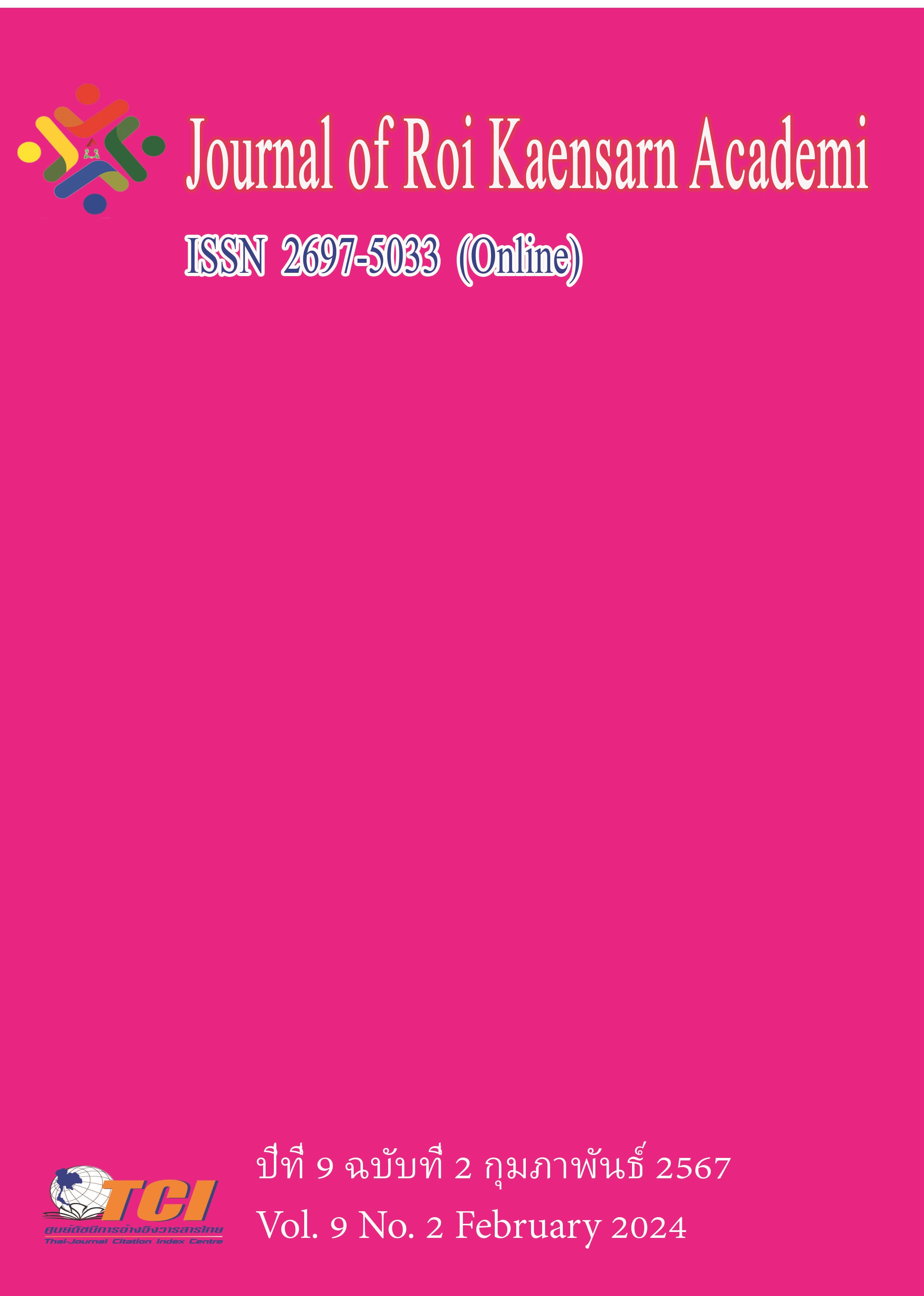The Creating of a Western Listening Guidebook for Music Education Major at Hubei Second Normal University
Main Article Content
บทคัดย่อ
The purpose of this study was (1) To study the problems existing in Western music appreciation courses. (2) To create a Western music listening guidebook for learning activities in the music appreciation course (3) The experimental listening guidebook for Hubei students at Hubei Second Normal University. Using a mixed research method, gathered target group data by interviewing five experts. The results were used to create a Western music listening guide, and the effectiveness of the guide was demonstrated by collecting listening test data from a 15-week teaching experiment with 31 students. The study will be conducted between October 2021 and February 2023. The results of the research are (1) The researchers discovered the basic problems of Western music listening: 1) listening is the basis and focus of course teaching, 2) learning related knowledge, 3) choosing suitable music works, 4) the level of listening to music, 5) Method of listening to music, 6) Music listening level test. (2) The consulting literature and interviewing five experts. Create Western music listening guidebook, with 7 chapters in total, and formulated a 15-week teaching plan, and (3) the listening results found that the test scores of learners' listening results were higher than the criteria with statistical significance at the 0.01 level.
Article Details
เอกสารอ้างอิง
Chen, X. (2015). Asking about "Listening"——On the Essential Attribute of Listening in Music Aesthetic Education. Music Research, (03), 71-81.
Chen, X. (2017). The Crisis and Challenges of Listening——Three Issues in Chinese Music Education. Curriculum. Textbooks. Teaching Methods, (11), 81-87.
Chen, X. (2022). Effective Listening: Rethinking School Music Education under the Background of "New Aesthetic Education". Chinese Music Education, (07), 36-42.
Cheng, Z. (2013). On the meaning construction of event-based music works in listening. Chinese Musicology, (02), 134-143.
Hastie, C., & Zheng, Y. (2016). Learning to Listen: Innovation in the Teaching Method of Music Theory. Global Education Perspectives, (12), 53-62.
Ji, Y. (2012). "Listening", "Appreciating", "Appreciating"——Teaching Discussions on Different Levels of Music Appreciation Courses. Music Creation, (09), 141-143.
Li, J. (2006). Discussion on the Important Position of Music Appreciation in the Music Education Major of Teachers Colleges and Some Problems in Teaching. Chinese Music, (03), 176-180.
Liu, L. (2010). Self-determination theory of motivation and its application. Journal of South China Normal University (Social Science Edition), (04), 53-59.
Qian, L. (2005). Music Listening and Emotional Statement On the Emotional Dominant Factors in College Students' Music Preference. Music Research, (04), 73-82.
Shan, S., & Wu, Z. (2003). Beyond Listening. Reading Music. China Book Review, (09), 4-6.
Shan, S. (2013). Appreciation teaching of "teaching a man to fish"——Comment on the junior middle school music appreciation class "How to "Listen" to Music". Chinese Music Education, (07), 40-41.
Song, D. (2012). Research on Experiential Music Appreciation Teaching. Teaching and Management, (15), 126-128.
Song, Q. (2014). Innovation and practice of teaching methods for music appreciation courses in colleges and universities. Gansu Science and Technology, (02), 67-69.
Wang, D., & Liu, Y. (2023). Listening with the body: sensibility and sensory criticism. Journal of Northwest University for Nationalities (Philosophy and Social Science Edition), (03), 174-179.
Wang, Q., Li, G., & Yan, T. (2021). Problems and Countermeasures in the Teaching of Music Appreciation Courses in Colleges and Universities. Educational Theory and Practice, (06), 62-64.
Xu, W. (2008). Teaching Reform of Music Appreciation Courses in Colleges and Universities. Art Education, (02), 38-39.
Ye, L. (2013). How to "listen" to music. Chinese Music Education, (07), 37-39.

